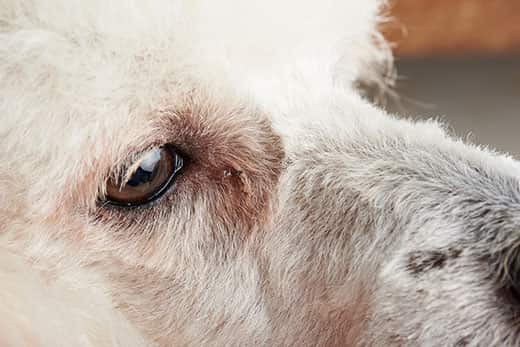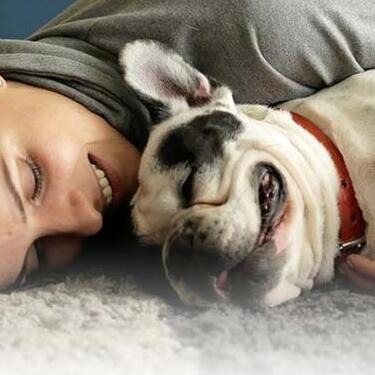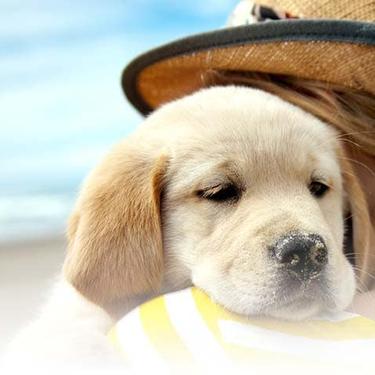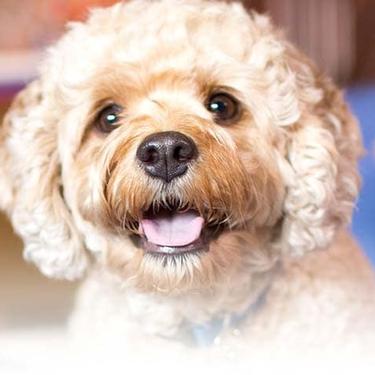
-
Find the right food for your pet
Take this quiz to see which food may be the best for your furry friend.
Find the right food for your pet
Take this quiz to see which food may be the best for your furry friend.
Featured products
 Small & Mini Savory Stew with Chicken & Vegetables Dog Food
Small & Mini Savory Stew with Chicken & Vegetables Dog FoodA delicious complement to the nutrition of Science Diet Small & Mini 7+ dog food
Shop Now Adult 7+ Perfect Digestion Chicken, Whole Oats & Brown Rice Recipe Dog Food
Adult 7+ Perfect Digestion Chicken, Whole Oats & Brown Rice Recipe Dog FoodScience Diet's breakthrough nutrition supports ultimate digestive well-being & healthy microbiome for dogs age 7+
Shop Now Adult Healthy Cuisine Roasted Chicken, Carrots & Spinach Stew Dog Food
Adult Healthy Cuisine Roasted Chicken, Carrots & Spinach Stew Dog FoodDelicious roasted chicken paired with tender vegetables in a succulent stew
Shop NowFeatured products
 Adult 7+ Senior Vitality Chicken & Vegetable Stew Cat Food
Adult 7+ Senior Vitality Chicken & Vegetable Stew Cat FoodImproves Everyday Ability to Get Up & Go
Shop Now Adult Savory Entrée Can Variety Pack Cat Food
Adult Savory Entrée Can Variety Pack Cat FoodPrecisely balanced nutrition with the delicious taste of savory minced chicken to help fuel the energy needs of cats during the prime of their life
Shop Now Adult 7+ Tender Tuna Dinner Cat Food
Adult 7+ Tender Tuna Dinner Cat FoodWith delicious chunks in a decadent gravy
Shop Now -
Dog
- Dog Tips & Articles
-
Health Category
- Weight
- Food & Environmental Sensitivities
- Urinary
- Digestive
- Joint
- Kidney
-
Life Stage
- Puppy Nutrition
- Adult Nutrition
- Senior Nutrition
Cat
- Cat Tips & Articles
-
Health Category
- Weight
- Skin & Food Sensitivities
- Urinary
- Digestive
- Kidney
-
Life Stage
- Kitten Nutrition
- Adult Nutrition
Featured articles
 Does My Pet Hate Me?
Does My Pet Hate Me?Learn tips for bonding with your pet if you've ever thought, 'My dog doesn't like me, or 'Why do I have a standoffish cat?'
Read More Why Are Dogs and Cats So Cute?
Why Are Dogs and Cats So Cute?If waggy puppy dog tails and furry kitten yawns make you swoon, you're not alone. Why are cats so cute? And, dogs too! Let's find out!
Read More Do Dogs and Cats have Belly Buttons?
Do Dogs and Cats have Belly Buttons?Learn whether cats & dogs have belly buttons like humans, what the function is, and if there are any health concerns associated with it.
Read More -


If your dog's eye is swollen and runny, he may have a condition called conjunctivitis. If that sounds alarming, don't panic. The chances that your pooch has caught dog this condition, also called "pink eye" are actually quite slim. To get the lowdown on conjunctivitis in dogs, including what causes it and what you should do to help your pet, keep reading.
What Is Conjunctivitis (aka Pink Eye)?

Conjunctivitis refers to a condition in which the pink tissue inside the eyelid, which is called the conjunctiva, becomes inflamed. There are two types of conjunctivitis in dogs. Infectious conjunctivitis, often referred to as pink eye, is caused by a viral or bacterial infection and is rare, says the veterinary science magazine dvm360.
More commonly seen in dogs is non-infectious conjunctivitis, which can have a number of possible causes. Typically, these fall along the lines of allergies, an irritating substance getting in the eye, injury or trauma to the eye or a congenital abnormality. Tufts University's Cummings School of Veterinary Medicine adds that conjunctivitis may be a sign of a more serious underlying condition, such as canine distemper.
Is It Contagious?
Non-infectious conjunctivitis in dogs is not contagious. If a case of dog pink eye is caused by a rare bacterial infection or a virus, however, the ASPCA warns that the condition can be transmitted by your dog to other dogs. If you suspect your dog might have pink eye, it's a good idea to keep your pup separated from other dogs and to wash your hands thoroughly with soap and water after handling him to prevent the infection from spreading to other animals.
If your pooch normally shares food and water dishes or bedding with other pets, he should have his own dishes and bedding until his conjunctivitis clears up, and they should be washed thoroughly. You should let any additional caregivers, such as dog walkers, dog daycare attendants or pet sitters, know about your dog's condition and the precautions that you're taking to contain it.
Breed Predisposition
While conjunctivitis can occur in any breed of dog or mutt, certain breeds are prone to conditions that can place them at a higher risk of conjunctivitis, says Tufts. Cocker spaniels, bulldogs and miniature schnauzers, for example, are prone to dry eye, which is a condition that commonly leads to non-infectious conjunctivitis.
A condition called entropion, which is when the edge of the eyelid rolls inward, may also cause the conjunctiva to become inflamed. This condition is common to shar-peis and chow chows, among other breeds.
Signs of a Problem
As a vigilant pet parent, these are the signs you'll want to keep an eye out for to recognize conjunctivitis in dogs:
- Red or puffy eyes
- Eye discharge
- Eyelids sticking together or squinting
- Swelling of the eyelid lining (the conjunctiva)
- Rubbing or pawing at the eye due to itchiness or discomfort


Tasty Tips
Should Your Pup See a Vet?
If you notice any of these signs, you should have your pup checked out by a veterinarian as soon as possible. Your vet will determine whether your dog actually has dog pink eye or a non-infectious case of conjunctivitis.
While non-infectious conjunctivitis is not a serious condition in and of itself, it won't clear up on its own without treatment, and it may point to a more serious health problem that needs to be addressed. Additionally, if left untreated, your dog could sustain a permanent eye injury or even vision loss.
Diagnosing Conjunctivitis in Dogs
In addition to performing a thorough examination of your dog's eye and eyelids, your vet will want to perform a general physical to determine his overall condition, says Tufts. Diagnostic tests your vet might run include bacterial cultures, a fluorescein eye stain test to check for corneal ulcers or abrasions, a Schirmer's tear test to check your pup's tear production, and a test for glaucoma. They may also perform several blood tests to screen for underlying illnesses.
Treating Conjunctivitis
The course of treatment your vet prescribes ultimately depends on what is causing the conjunctivitis. If they determine that your dog does indeed have pink eye, he'll likely be prescribed a bactericidal or fungicidal ointment to be applied to the eye topically. Your dog might also be given anti-inflammatory medication to help with swelling and discomfort.
If a foreign object is responsible for the irritation and swelling, your pup may need to be placed under general anesthesia in order for the vet to remove it without risking further eye injury. Of course, if your dog's conjunctivitis turns out to be a sign of a more serious illness, your vet will work with you to take steps to treat the underlying condition.
Helping Your Dog at Home
Natural and home remedies may be helpful in providing relief to your pet, although they should never be a replacement for veterinary care. Wash your hands thoroughly before touching his eyes and face to avoid causing more irritation. You should always check with your vet before applying any herbal or homeopathic remedies to be sure the ingredients are safe and won't interact harmfully with any of his prescribed medications or interfere with treatment of his underlying conditions.
Non-infections conjunctivitis, while uncomfortable for your dog may only be an irritant to your dog, but that doesn't mean the signs should be taken lightly. Now that you're armed with knowledge of what to watch for, you'll be able to take prompt action to get your pup a proper diagnosis and treatment to protect his vision and overall health.


Jean Marie Bauhaus is a pet parent, pet blogger, and novelist from Tulsa, Oklahoma, where she usually writes under the supervision of a lapful of fur babies.
Related products

A delicious complement to the nutrition of Science Diet Small & Mini 7+ dog food

Science Diet's breakthrough nutrition supports ultimate digestive well-being & healthy microbiome for dogs age 7+

Delicious braised beef paired with tender vegetables in a succulent stew

Delicious roasted chicken paired with tender vegetables in a succulent stew
Related articles

Hill's Science Diet Small & Toy Breed dog foods are designed to meet the nutritional needs for your small dog at every life stage. Learn more here.

Your dog's coat and skin are a big part of your dog's overall health. Ensure you keep your dog's coat healthy, by following these simple tips.

Large and giant breed puppies have different nutritional needs than other dogs. Learn how to provide the special care they need to grow up big and strong.

Learn about choosing the right food for your mature or older dog, ensuring he receives the correct balance of nutrition.

Put your dog on a diet without them knowing
Our low calorie formula helps you control your dog's weight. It's packed with high-quality protein for building lean muscles, and made with purposeful ingredients for a flavorful, nutritious meal. Clinically proven antioxidants, Vitamin C+E, help promote a healthy immune system.
Put your dog on a diet without them knowing
Our low calorie formula helps you control your dog's weight. It's packed with high-quality protein for building lean muscles, and made with purposeful ingredients for a flavorful, nutritious meal. Clinically proven antioxidants, Vitamin C+E, help promote a healthy immune system.

